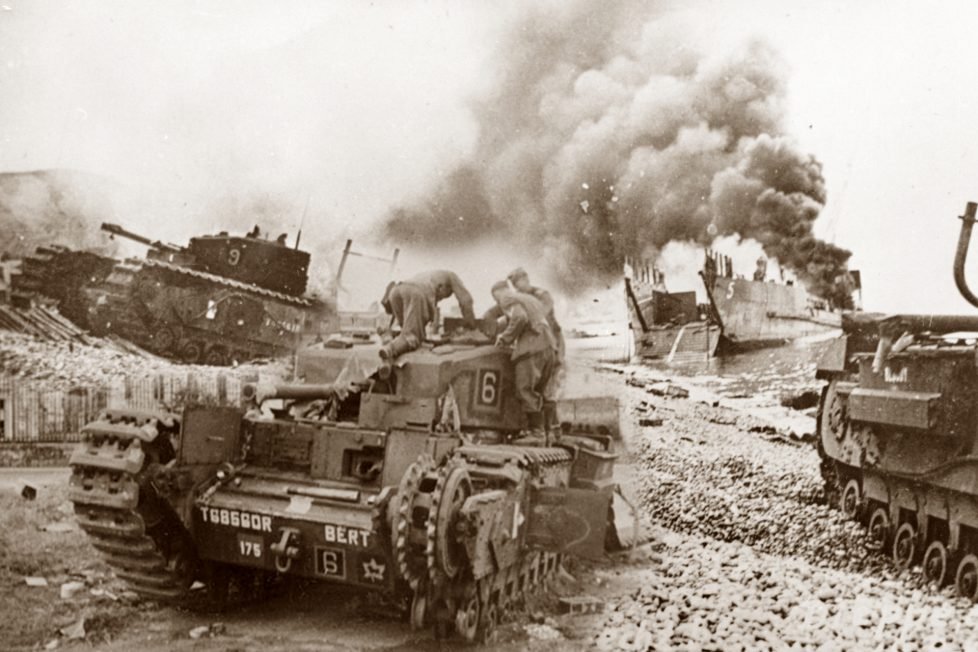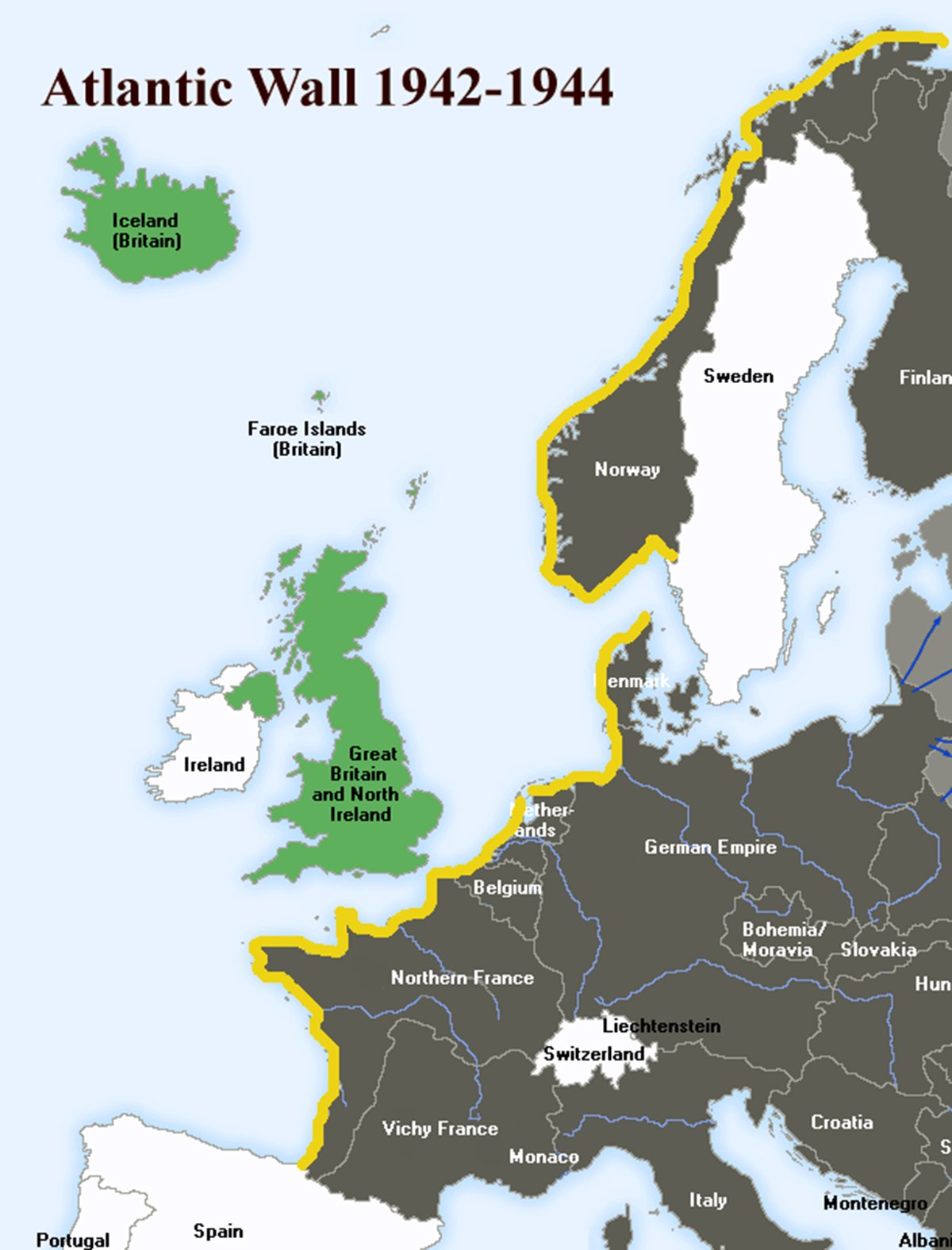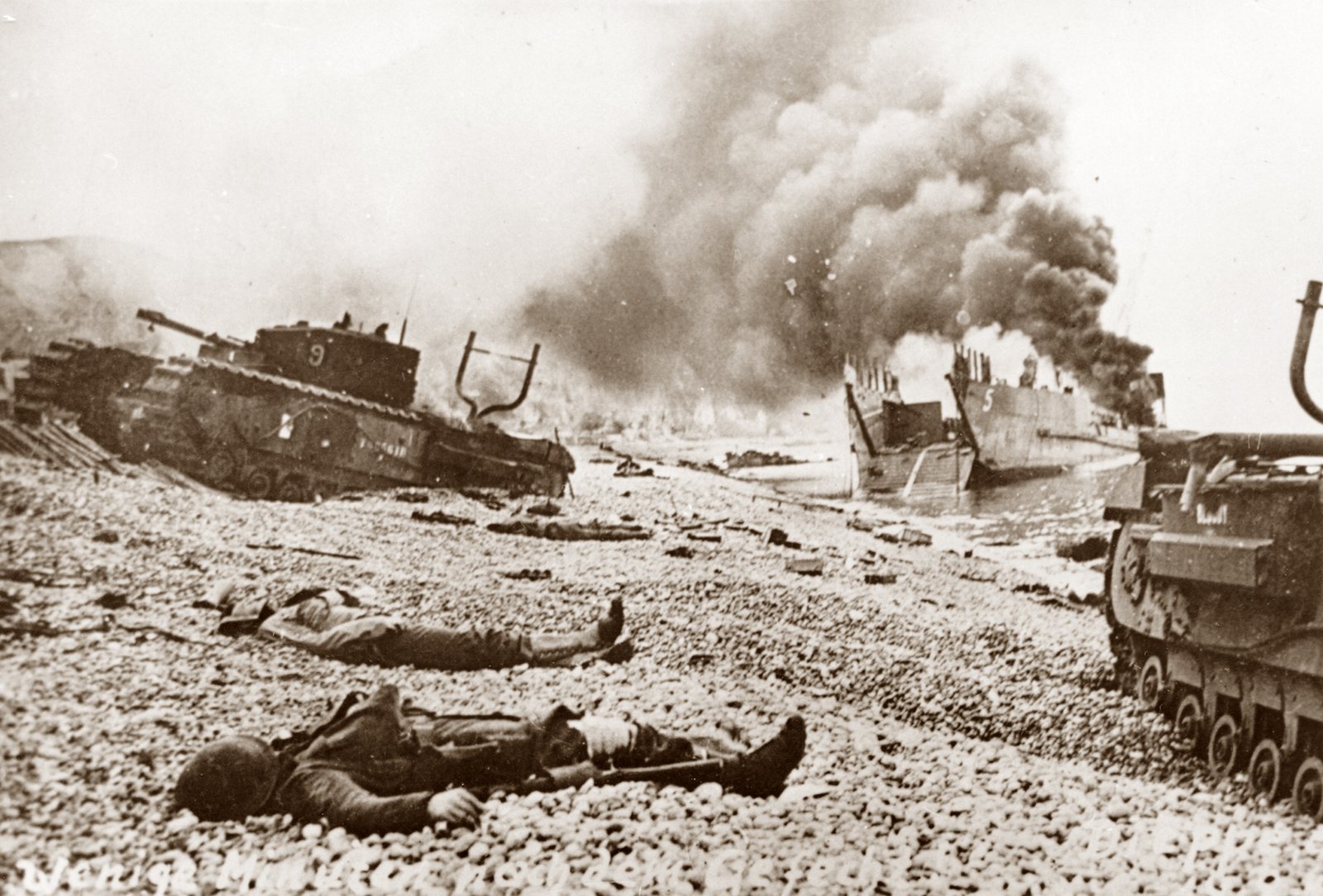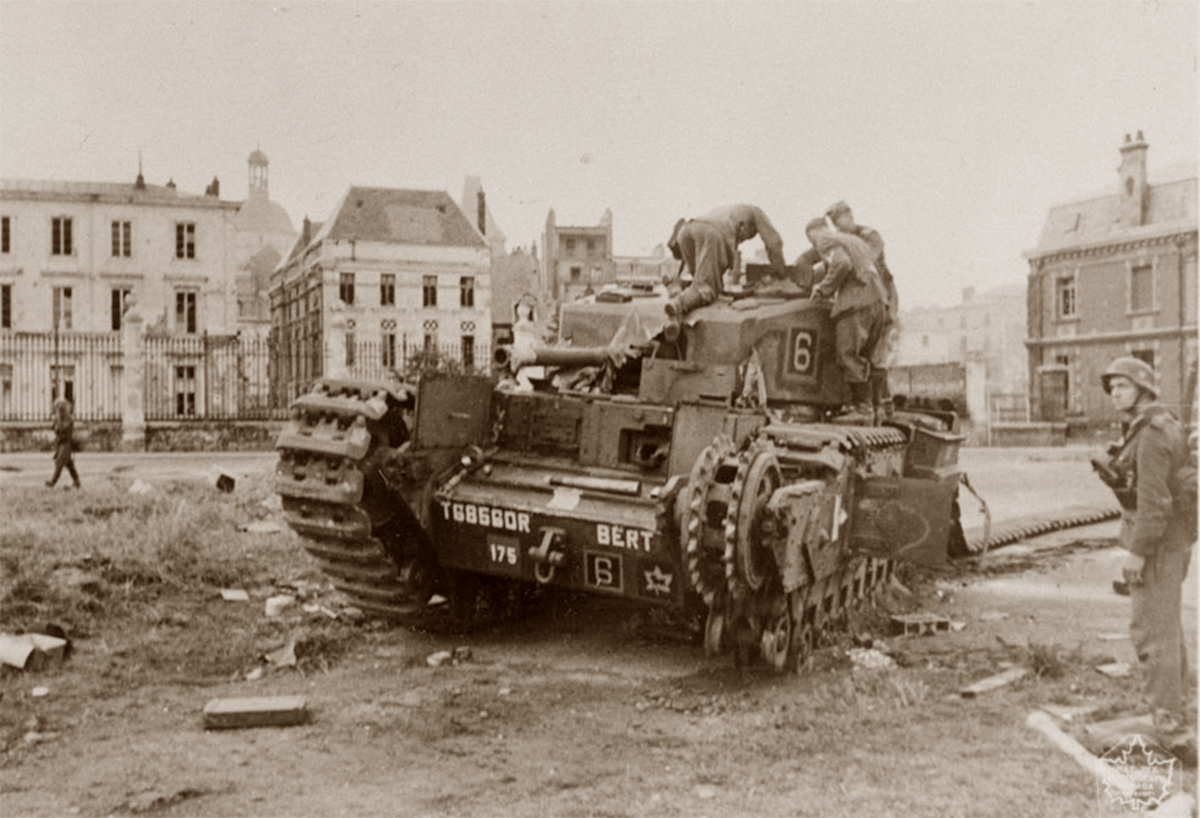Dieppe Raid: Prelude to D-Day or an Overstretched Operation?
On 19 Aug 1942, 6,000 Canadians attacked Dieppe; half were lost. This tragic raid influenced D-Day's success.

On 19 Aug 1942, 6,000 Canadians attacked Dieppe; half were lost. This tragic raid influenced D-Day's success.

Table of Contents
ToggleIn the small hours of 19 August 1942, a Canadian-heavy force of 6,000 confident soldiers sped in darkness in assault landing craft towards the coastline of France for a dawn assault. Hours later, the dejected and battered remnants of the force were heading back to England, leaving half their number behind, dead, wounded or captive on the beaches of Dieppe. An important consolation came two years later: the D-Day invasion on 6th June 1944 was an overwhelming success, at least due in part to the brutally painful lessons dished out to the Canadians at Dieppe. But did it have to happen?
In the mid-summer of 1942, there were a lot of factors pressing for a military operation against Hitler’s Atlantic Wall fortifications that stretched from Norway to the Pyrenees.

Ever since the evacuation at Dunkirk two years earlier, the British army had contemplated what they considered to be an inevitable task: the return of British forces to mainland Europe. The Soviet Union was in the second year of a titanic struggle with Germany: Operation Blau had thrust Army Group South deep into the steppes, towards the oilfields of the Caucasus and the city of Stalingrad. Marshal Stalin believed that the British and Americans were content to allow the Soviets to bear the brunt of the fighting. He demanded a western invasion in 1942. Churchill and Roosevelt were sympathetic – they had already agreed on a “Germany first” policy to defeat Hitler as the priority before on Japan. Operation SLEDGEHAMMER – the draft Allied invasion plan for 1942 had already been dismissed as unrealistic. Operation ROUNDUP – the invasion of Europe in 1943 – was also looking distinctly implausible. By June 1942 Operation TORCH – the American invasion of North Africa – had been given the go ahead. If successful, this was likely to lead to the invasion of Sicily and Italy – Churchill’s favoured “soft underbelly” route into Germany.
With an invasion therefore unlikely in 1942, there was a general feeling of “well, we have to do something” in the thinking that led to the Dieppe raid. British Royal Marine Commando units had been launching small-scale raids from Norway to Madagascar since 1940. A particularly audacious amphibious raid at St Nazaire on 28 March 1942, saw an out of service Royal Navy destroyer rammed into a vital dry dock to be deliberately exploded. The force was accompanied by 600 commandos who disembarked under heavy fire to destroy dock installations.
The pin prick raids were becoming bigger. Something more upscale now evolved. But there was a problem. Operation JUBILEE, the Dieppe attack, was becoming a lot of different things to a lot of different people. Churchill wanted a demonstration of intent to satisfy Stalin. The RAF wanted to force a large battle with the Luftwaffe. The intelligence community were hoping to snatch secrets and prisoners. Others wanted to probe and test the Atlantic Wall in a “reconnaissance in force”. And the Royal Marines of course, were looking forward to blowing stuff up. There was a momentum of enthusiasm for the operation which seemed to have overlooked one critical outcome of the successful St. Nazaire raid. Of the 600 commandos that landed, only 228 men returned to England, the rest were killed or captured. Raids could be a very expensive way of burning through elite troops.

The Canadians of the British Empire had rushed to the colours when war broke out. Thousands of Canadian men had joined up and were busy training in Britain. Some had been there since 1940 and many – from private soldiers to generals alike – were craving a bit of action. Major-General Harry Crerar, command of the 1st Canadian Corps, was pushing to get them into the war. He had been advocating attacks on the French coast to get his Canadians some battle experience.
Plans got underway. Operation RUTTER was the forerunner to JUBILEE. A force of Canadians would attack Dieppe in early July. Intensive training took place. But on the day of embarkation the weather was poor and the Germans spotted the convoy and bombed it. RUTTER was cancelled. But the preparations were not going to be wasted. The RUTTER operation was re-purposed despite misgivings (Montgomery wanted to abandon it, but Mountbatten, as Chief of Combined Operations wanted to proceed) and became JUBILEE, set for 19 August. The plan was to take and hold Dieppe for eight hours, destroy installations, gather intelligence and be away before German reinforcements could be brought to bear. Five thousand Canadians would form the core of the attack on Dieppe itself. A thousand commandos would land on the east and west flanks to attack coastal artillery batteries that could threaten the oncoming naval force. A battalion of the new Churchill tanks would also be landed, to provide fire support.
There were two major problems that do not appear to have been given full attention – both are still evident with just a quick look at Google Maps. The beach at Dieppe – unlike the beaches finally chosen for the D-Day landings – was dominated by steep cliffs on either side. This high ground meant there was no place on the narrow beach that could hide from observation and gunfire.
The beach was not comprised of firm sand, but chert – larger rocks and pebbles. This – it was discovered – made it difficult for the tanks to grip and manoeuvre. The large stones got jammed in between the tracks and the bogey wheels causing some tracks to break.

The attack was split into eight landing sites, with the British commandos off to the east and west flanks on beaches Yellow and Orange. Some of the invasion ships met a German convoy and a gun battle broke out, the upshot being that the Dieppe garrison was placed on alert.
The flank forces had a mixed result: No. 3 Commando landed and attracted heavy fire. Pinned down and unable to make any significant headway, they retreated without damaging the gun battery. Lord Lovat, with No. 4 Commando, did better, conducting a “model operation”. The commandos managed to land some mortar rounds on the battery ammunition dump, causing a massive explosion. The Commandos re-embarked and were heading back to Britain by 07.30.
The Canadians themselves, however, were heading into an object lesson in what happens to a head-on assault if the enemy is prepared and ready. At Blue beach at the small port of Puys, most of the officers were hit in the first few minutes and the attack quickly bogged down. Red and White beaches, at Dieppe itself, went ahead under withering fire from coastal guns, machine guns and mortars. Many soldiers did not get onto the beaches, let alone get off them. The soldiers were charged with taking the beach and destroying anti-tank obstacles to allow the tanks to move into the town. But the sea wall posed problems – it was not big enough to offer cover and it was smothered in barbed wire which made it difficult to get through. The Essex Scottish Regiment suffered 75% casualties. Within minutes, many platoons and companies were no longer capable of forward movement and simply hunkered down, hoping for evacuation.
The tanks following up behind the infantry fared no better. Twenty nine Churchill tanks were thrown at the beach. Of the first wave of six tank landing craft, all vessels were hit and one sank, for the immediate loss of two tanks. Of the eighteen tanks in the first wave, twelve never got off the beach. The second wave came half an hour later and met even more intense fire. Churchill’s tracks were vulnerable, either to stones blocking them or to enemy fire. One tank was disabled by a Stuka – a reminder of a bitter aerial battle that raged overhead throughout the battle – not all of it going the RAF’s way. Half the tanks got over the sea wall but did not get into the town, but drove up and down the sea front firing at targets of opportunity, before retiring back to the beach. They had no infantry support to allow them to risk getting into the narrow streets of Dieppe.
Even as earlier as 06.30, the senior force commanders realized that the plan was going awry – the cliffs and high ground dominating the town were still held by the Germans. But, in the chaos and literal smoke of battle, it was difficult to gain a clear picture. Instead of ordering an early withdrawal, reinforcements were sent in, in the form of a Royal Marine commando unit and the Fusiliers Mont-Royal (FMR). Both were similarly chewed up. Two FMR landing craft were hit and sunk, half the soldiers landed in the wrong place and many had surrendered by 12.00. Reportedly a Royal Marine officer, on getting through the smoke and closing on the beach, suddenly realized the scale of the slaughter, tried to get his assault wave to turn back. Some landing craft saw his signals and did so. Then the officer was shot.

The scale of the catastrophe is there to be seen in the photographs taken in the immediate aftermath: dozens of Canadian bodies huddled up against sea walls, tanks and armoured cars abandoned on the chert beach, burnt out landing craft.
The price paid was shocking – 1,874 soldiers were captured, 1,290 were killed. Twenty nine tanks were lost, as were 33 landing craft and one destroyer. The RAF lost 100 aircraft to the German’s 50.
As a final slap in the face, it seems the Germans were unimpressed with this brand new Churchill tank that had fallen into their lap. It was heavy, old-fashioned and under-gunned – and not as good as the Russian armour they had been fighting for over a year. Their intelligence report stated that the Churchill “in its present form, is easy to combat.”

It is certainly possible to see the legacy of Dieppe as the successful D-Day landing. But it remains debatable to this day as to whether such a poorly planned and coordinated attack was necessary to learn those lessons.
A Canadian infantry captain said: “Dieppe was a tragedy, not a failure.” A British Army liaison officer bitterly noted that there was: “nothing to be learned from Dieppe, except how not to do it, a little late in the war to learn that lesson.”
